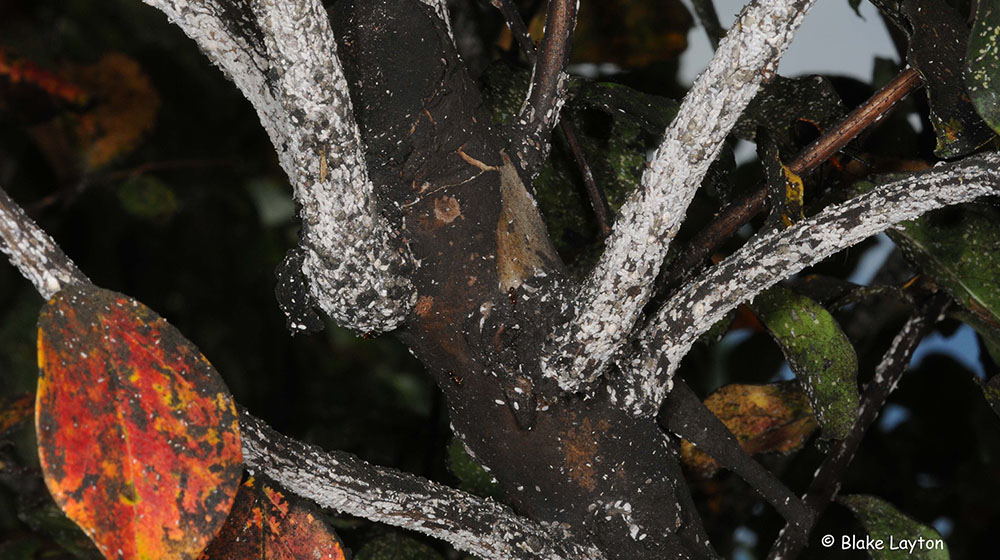Crape Myrtle Bark Scale, No. 24

Order: Hemiptera
Family: Eriococcidae
Crape Myrtle Bark Scale (CMBS) is now present in Mississippi! This year established infestations of CMBS have been detected in home and commercial landscapes in both ends of the state, Ocean Springs and Olive Branch, and this serious, non-native pest could easily spread to other areas. Why the big concern? Just take a look at the photo. CMBS causes crape myrtles to become black and ugly, with accumulations of sooty mold, and results in poor growth and poor bloom production. In essence, CMBS has the potential to turn what has traditionally been a beautiful, low-maintenance landscape tree into an ugly, high-maintenance tree.
What to Look For: Heavy infestations of CMBS are easy to identify. 1} First, watch for crape myrtles with heavy accumulations of black sooty mold, but keep in mind that heavy aphid infestations also cause this symptom. 2} Look more closely for patches of white felt-like material on the trunk, limbs, or twigs. 3} Individual adult female scales are oval-shaped and about 1/10 inch long, but heavily infested limbs may be totally encrusted with scale. 4} CMBS bleed pink if the felt cover is broken with a knife point or tooth pick.
Control: The best offense is a good defense—avoid buying and planting infested crape myrtles. Work closely with your nursery to be sure any crape myrtles you purchase are CMBS free. Low-level infestations are difficult to detect. If you think you have found CMBS, notify your local county extension office and begin an aggressive control program. Ideally, the goal is to eliminate CMBS, and CMBS-infested plants, from the landscape before the infestation can spread. Control options for infested trees include soil-applied systemic insecticides containing dinotefuran or imidacloprid, and foliar insecticide sprays containing insecticides or insect growth regulators that control immature stages of CMBS. For full details on CMBS control, contact your local county extension office and ask for a copy of: Crape Myrtle Bark Scale Scouting and Control Recommendations.
Blake Layton, Extension Entomology Specialist, Mississippi State University Extension Service.
The information given here is for educational purposes only. Always read and follow current label directions. Specific commercial products are mentioned as examples only and reference to specific products or trade names is made with the understanding that no discrimination is intended to other products that may also be suitable and appropriately labeled.

